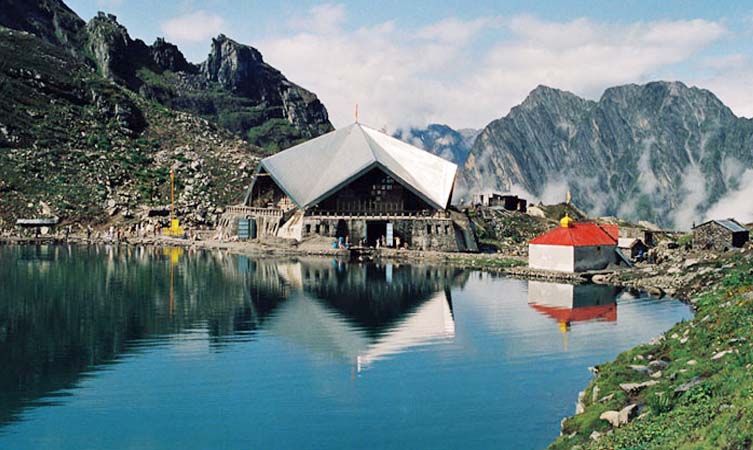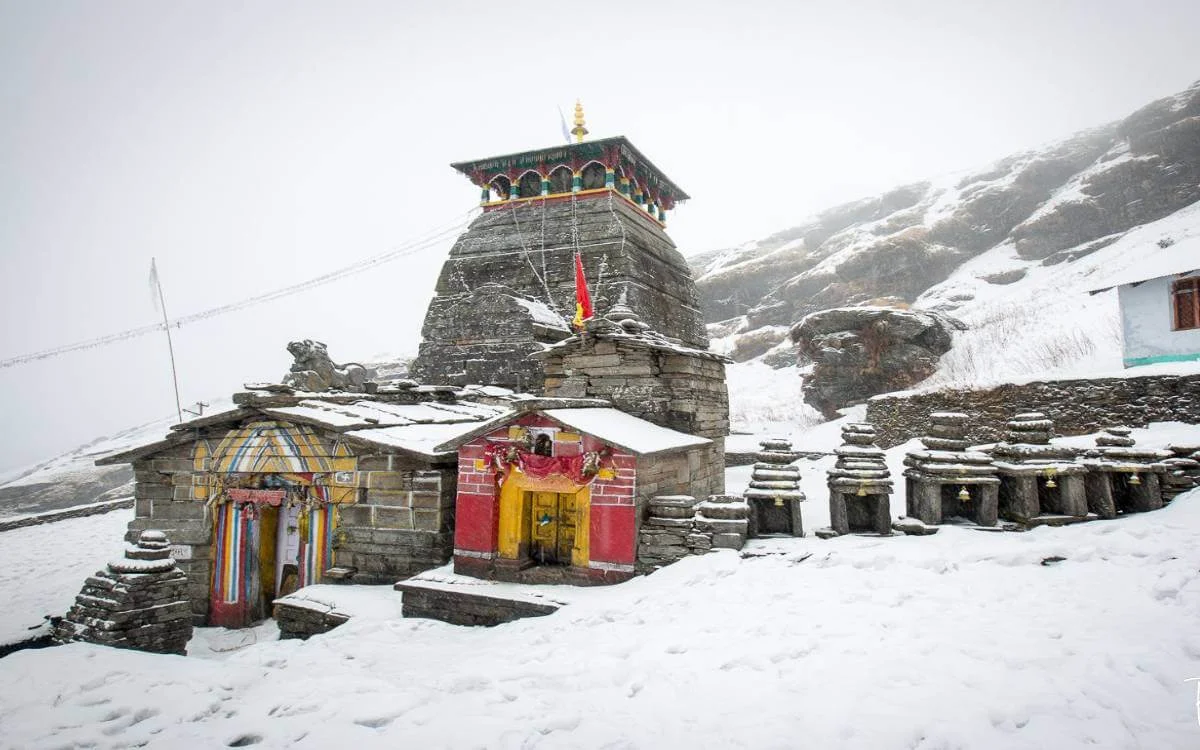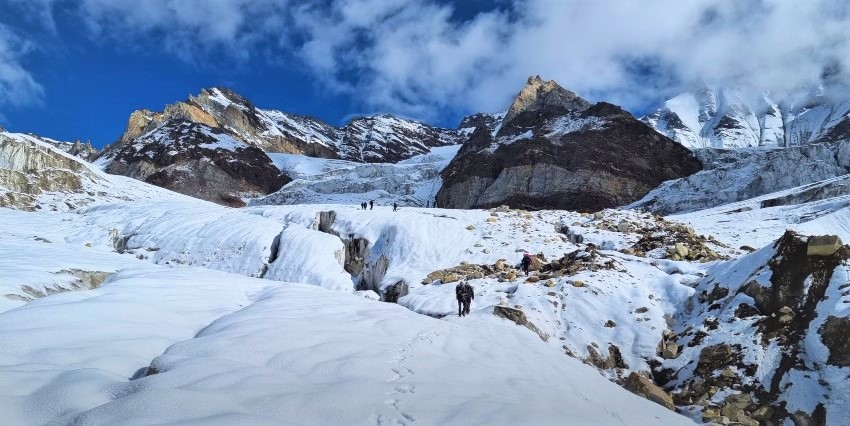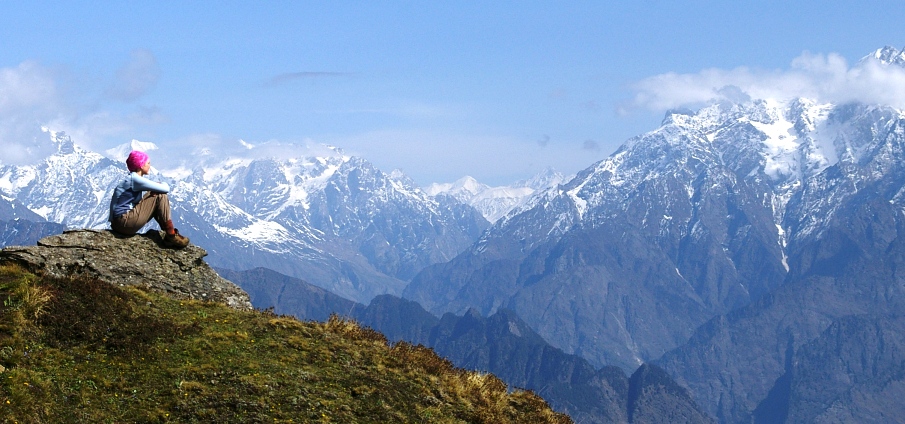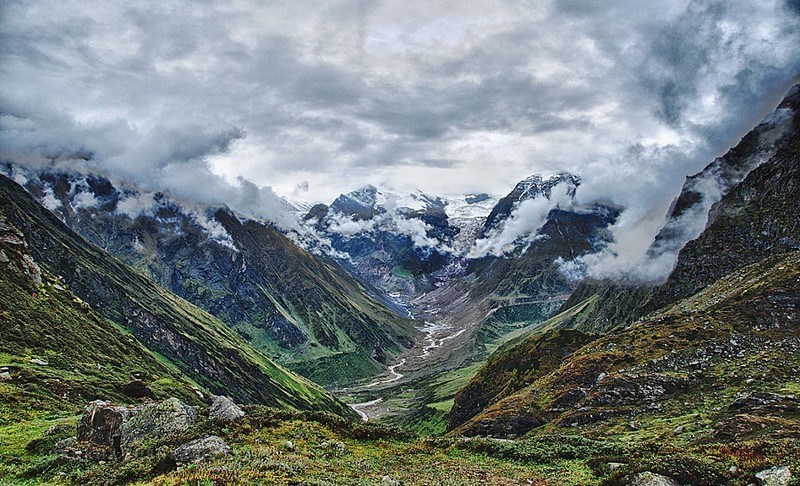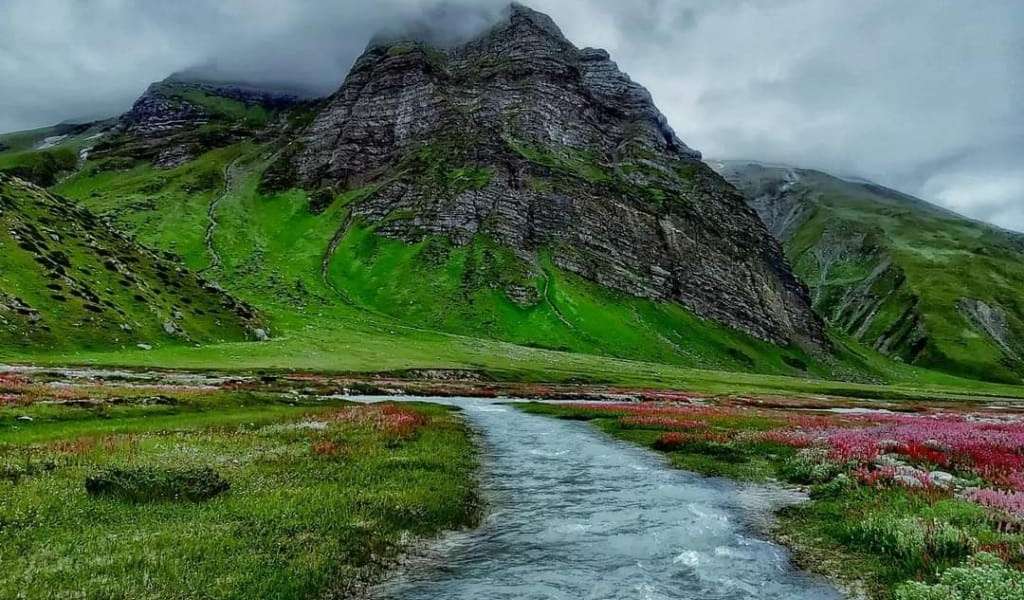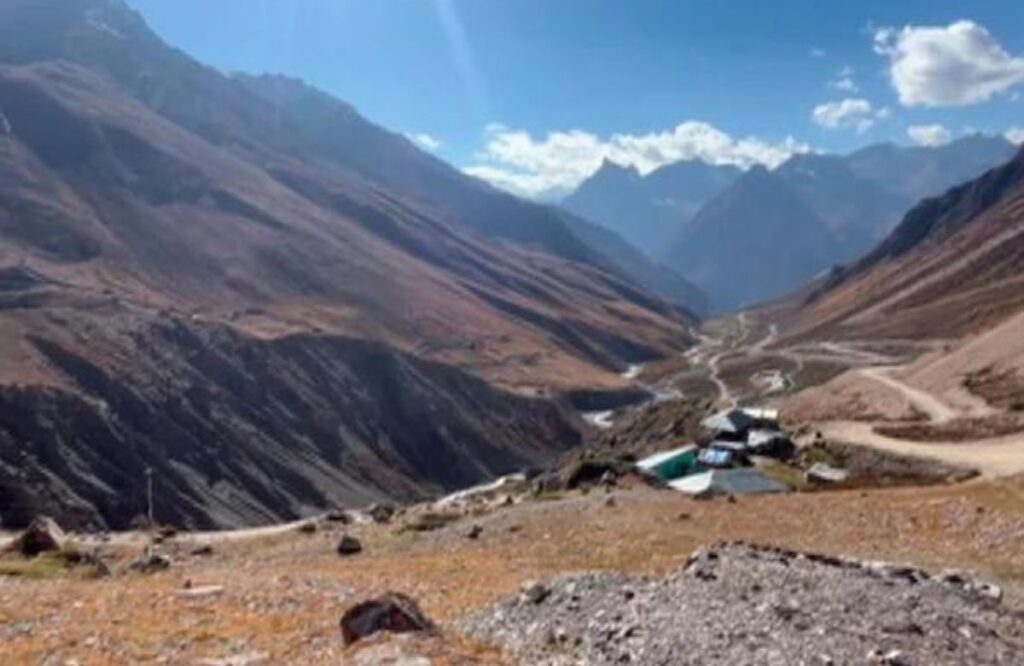If you ask everyone who has gone to Hemkand Sahib, they will not tell you just about a Gurudwara. They want to talk about a climb that burns the lungs, a lake that follows the hands and a silence still sitting inside them.
At a distance of 15,000 feet in Garhwal Himalaya, Hemkund Sahib is not just a destination. It is a test, a teacher, a break between the earth and the sky.
Govindghat: Where the Steps Begin
The road starts from Govindghat. Alakananda rotates nearby, taking the snowmill that never rests. Here the air smells pine, warm tea and mules. Stores hanging socks from the crowds, plastic raincoat in neon colors, pulling sticks parked in corners.
"Iyaras? Some pilgrims nodded. Others shake their heads and tighten the shovel. There are nonsense, negotiations, laughter. Older people adjust the turbans. Children who are painful on biscuits. Everyone knows that the road in front will not be easy.
The Long Walk to Ghangaria
Thirteen kilometers do not give much sound, but Govindghat to Gangaria (Tangri) seems long. The path embraces stones, crossing flows on unstable wooden bridges and winds under long cedar. If there is a change in the air, spray the waterfalls. The pony tied around the jingel with each step.
On the side are suppliers squatting with baskets cucumbers, cucumbers with salt, cooked corn. A woman offers tea from a steel boiler, curly steam in the cold. I stopped once, took a dip slowly, looked at the stream foam white against black stone.
By dusk, most reach Ghangaria. The village buzzes like a base camp. Dhabas cook dal-chawal, smoke rising from tin roofs. Pilgrims sit on charpoys outside, rubbing sore calves, laughing through their tiredness. Someone strums a dholki faintly in the distance. The night is restless but full of anticipation.
Six Kilometres of Test
From Ghangaria to Hemkund is six kilometres. Doesn’t sound bad until you’re on it. It’s all uphill. Stone steps carved into the mountain, sharp and endless. The air grows thinner. Breathing feels like pulling air through a straw. Every twenty steps, you pause, hands on knees, chest heaving.
“बस और दो मोड़, फिर साफ दिखेगा,” a young man tells his friend, though he’s panting too. Clouds drift across the trail, swallowing you whole. Then they lift, and suddenly you see the peaks, white and harsh against a blue sky. That glimpse pushes you forward.
I remember hearing Gurbani hummed softly by an old man as he walked, the rhythm matching his steps: “वाहे गुरु, वाहे गुरु…” Each repetition carried him upward.
First Sight of the Lake
When Hemkund Sahib appears, it doesn’t roar for attention. It waits. The Gurudwara stands by the lake, modest and white, dwarfed by seven peaks circling it like guardians. The lake itself looks unreal. Still as glass, icy even in summer, reflecting the mountains upside down.
Pilgrims shuffle towards it. Some dip their hands, others pour water on their heads. A few steps fully in. Gasps echo the shock of cold is brutal, but faces emerge glowing. A man next to me whispered, “पाप धुल गए।” Sins washed away.
The silence here is different. Heavy, like snow pressing on branches. You lower your voice without realising.
Inside the Gurudwara
Shoes come off at the entrance. You step onto cold stone. Inside, the warmth of prayer surrounds you. People sit cross-legged on mats, shawls pulled close, eyes shut. Gurbani flows steady, timeless. The Granth Sahib rests at the centre, flowers laid fresh.
I sat near the back, watching. The wind whistled through a crack in the door, carrying the chant out toward the lake. It felt like the mountains themselves were listening.
Seva Everywhere
Faith here is not only about bowing your head. It’s about seva. Volunteers haul sacks of rice up the trail so strangers can eat. Others repair broken steps. On the way up, a man stopped to hand me water, smiling, “थोड़ा पी लो, ऊपर और कठिन है।”
At the langar hall, you sit shoulder to shoulder. Steel plates clink. Hot khichdi ladled out, roti slid onto palms. The food is plain, but when you’ve climbed that far, it tastes rich. You look at strangers across the row, and they feel like companions, not strangers at all.
Nights at Hemkund
If you stay overnight, stars spill across the sky like you’ve never seen. The Milky Way is sharp enough to trace with your finger. The Gurudwara glows with soft light. Bells ring, Gurbani continues. Some pilgrims still arrive in the dark, blankets wrapped tight, faces weary yet relieved.
The cold is unforgiving. Even under heavy quilts, you shiver. Yet sleep comes, carried by exhaustion and the comfort of being close to something vast and sacred.
Hardship and Reward
This trek is no gentle walk. The steps cut deep into your legs. The altitude scrapes your lungs raw. Weather turns without warning rain, hail, snow. People stumble, some even faint. Yet most keep going. A woman held her husband’s arm when his knees shook. A teenage boy carried his father’s bag when he could not. Small acts became prayers.
You realise faith here is not about rituals alone. It is about effort, about carrying on when you want to stop.
When to Go
The Gurudwara opens in late May or early June and closes by October. Winter buries everything in snow. June is crisp, September calmer, October already cold. Monsoons paint the valleys green, but the trail turns risky. Timing matters, but so does luck. The mountain decides who reaches.
What Stays With You
People don’t come back with just photos. They carry the shock of icy water on their skin. The sound of a hymn echoing in thin air. The taste of chai sipped under a leaking tarp during the rain.
I still remember a child offering me a piece of gur halfway up. Sticky and sweet, it carried me through another mile. Little things like that stay longer than the view itself.
Why Hemkund Matters
In a world of quick comforts, Hemkund Sahib demands struggle. It asks for sweat, patience, humility. It strips you of ego until you stand by the frozen lake, breathless, quiet, aware of your own smallness.
It is not a shrine built for show. It is a shrine carved by endurance. And that is why those who reach it never forget it.
Closing
Hemkund Sahib is not just a Gurudwara on a mountain. It is a lesson taught by stone, snow, and silence. You leave a piece of yourself on the trail, but you gain something larger a stillness that returns whenever life grows noisy.
Years later, you might find yourself in a crowded street, yet remember the hush of that lake. You might taste ordinary khichdi, yet recall the warmth of langar served after the climb. That is what Hemkund gives. Not just memory, but a quiet you carry forever.

